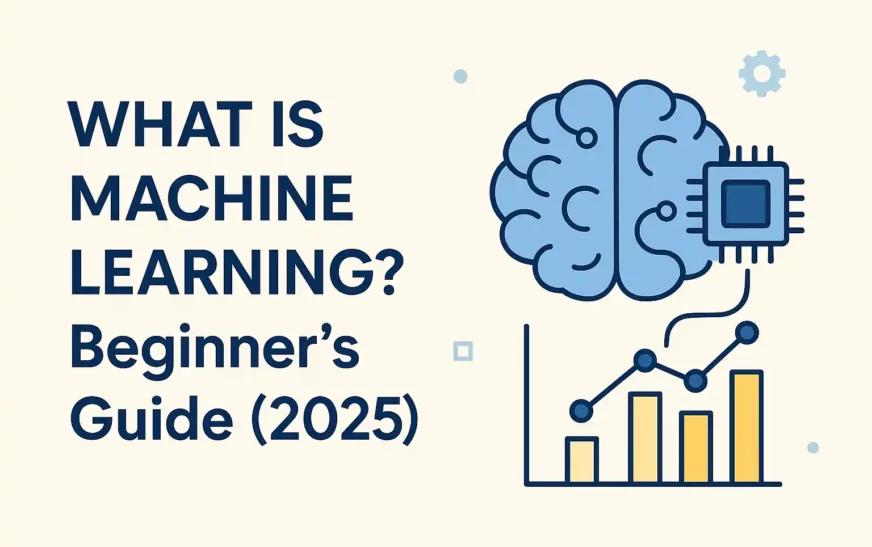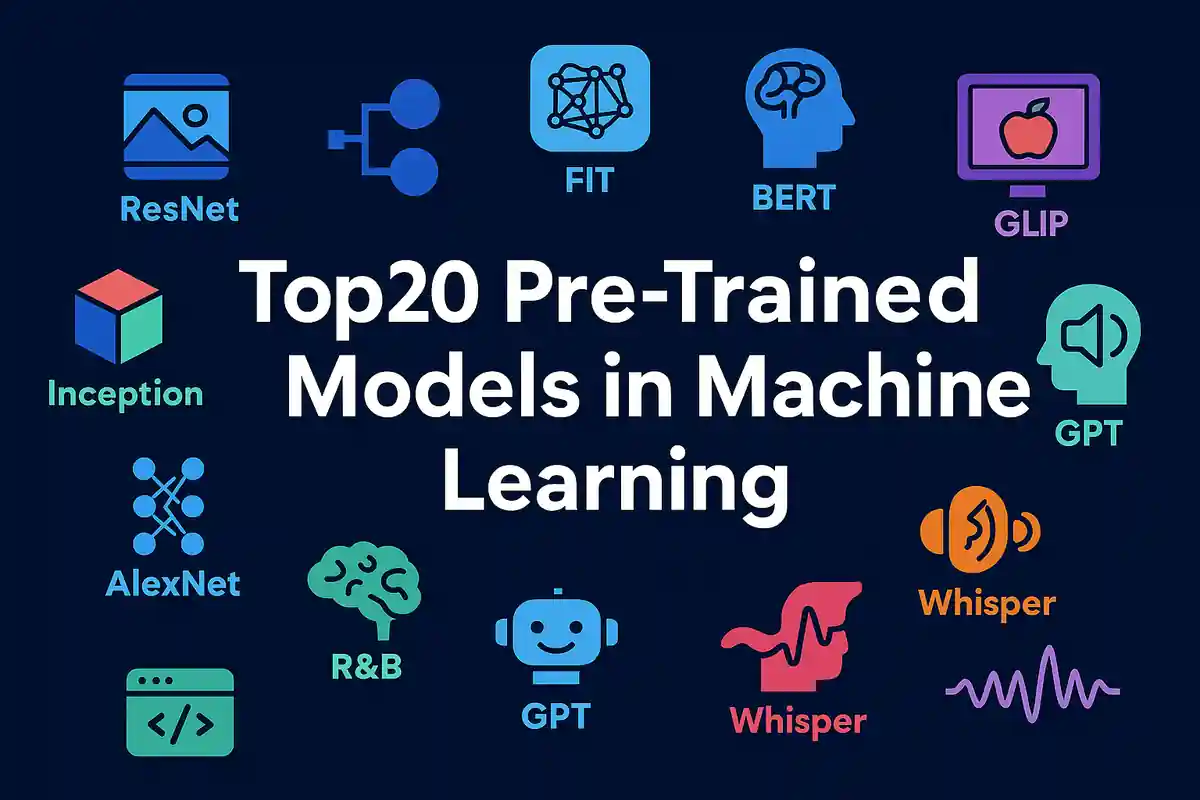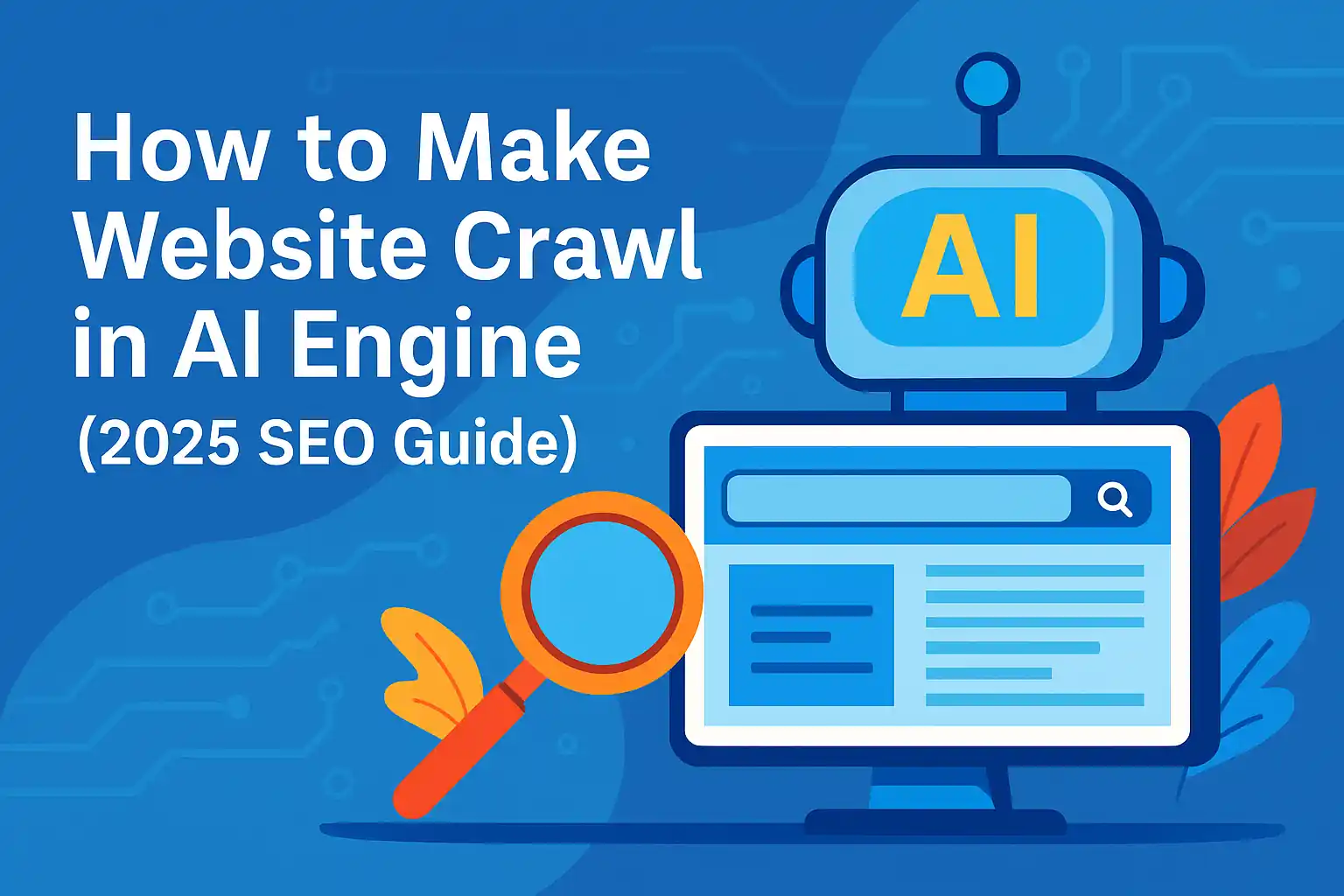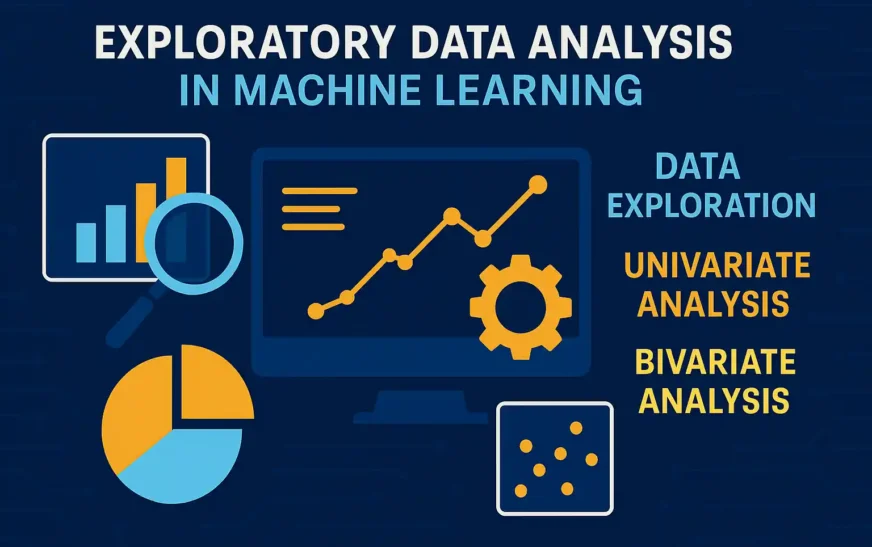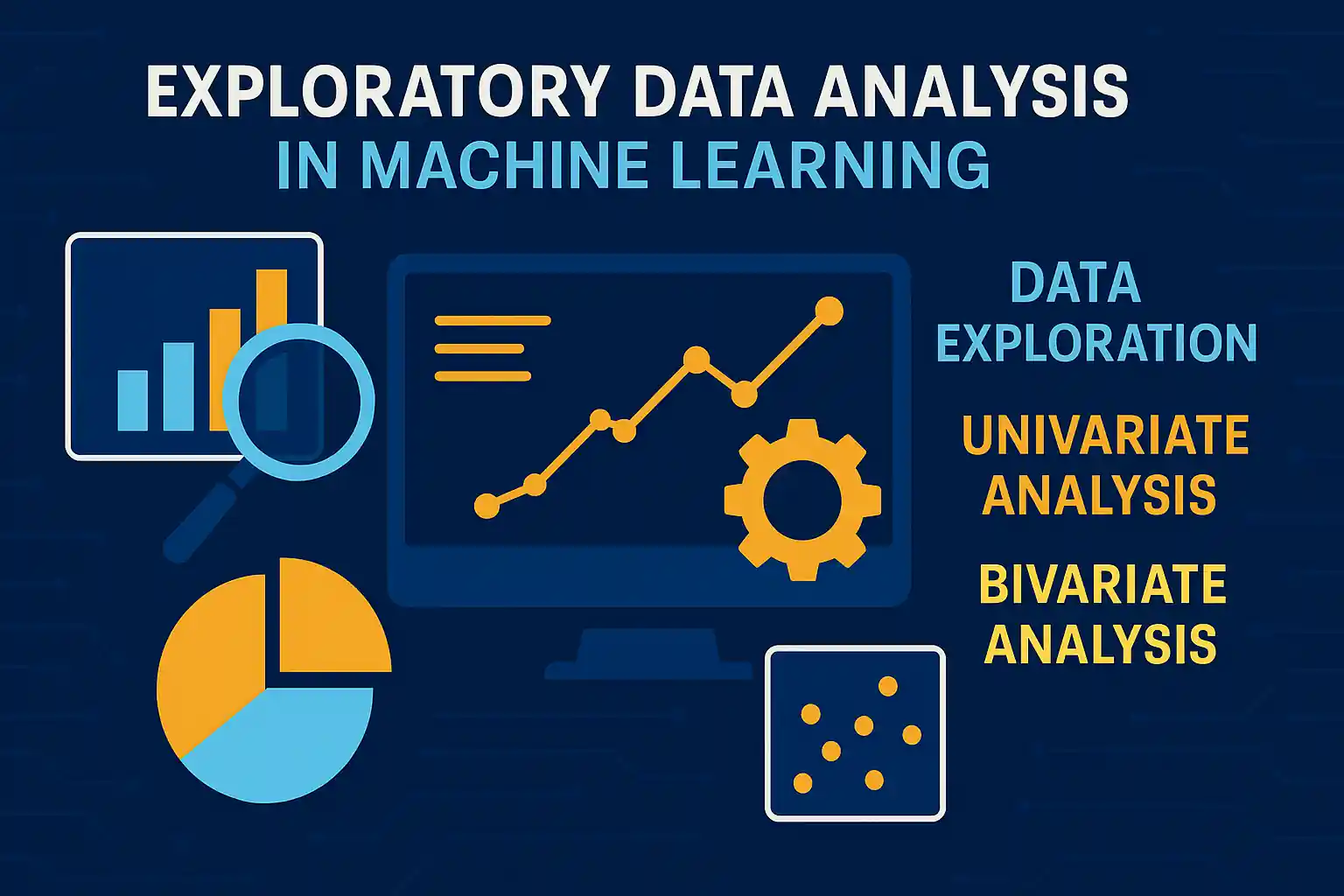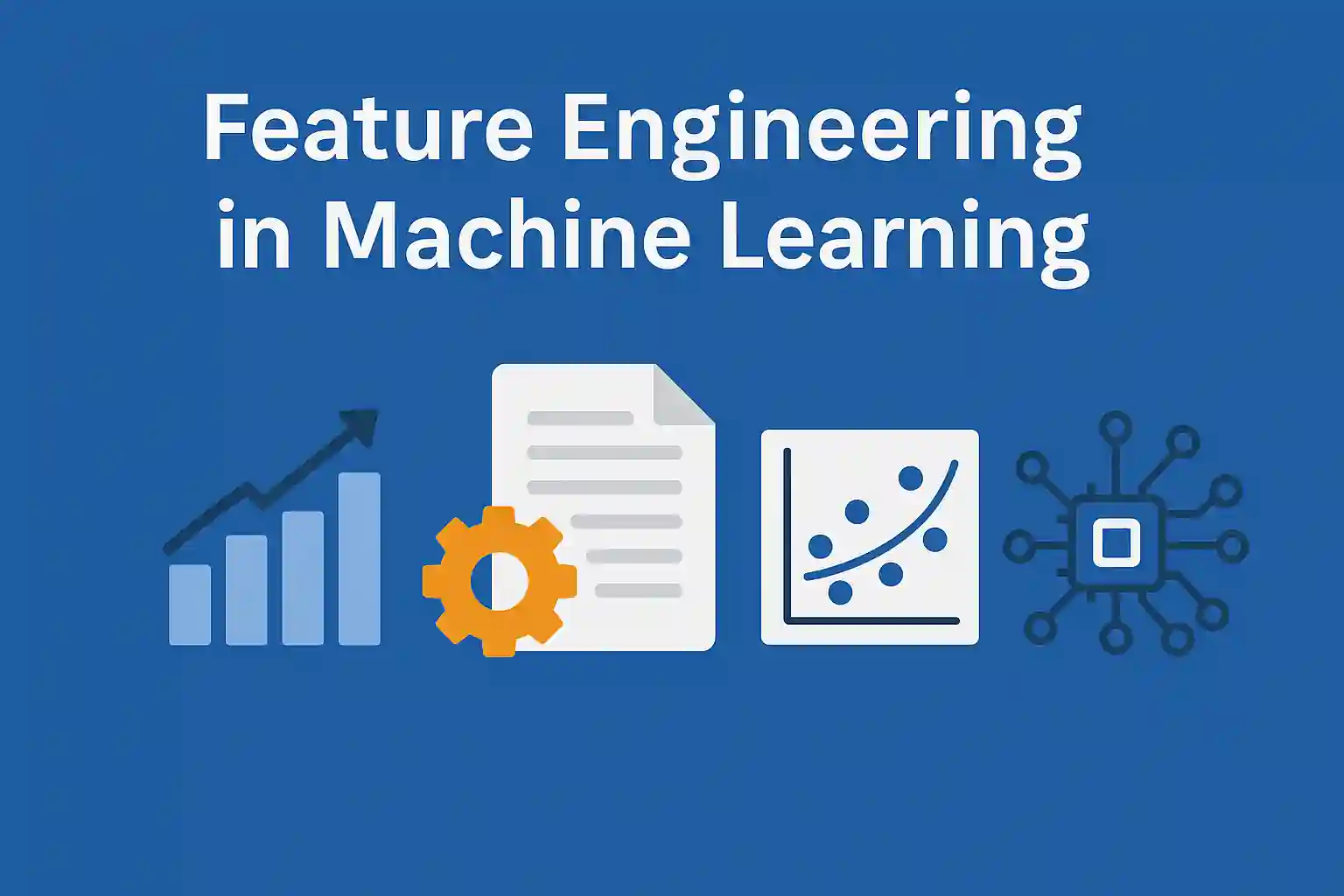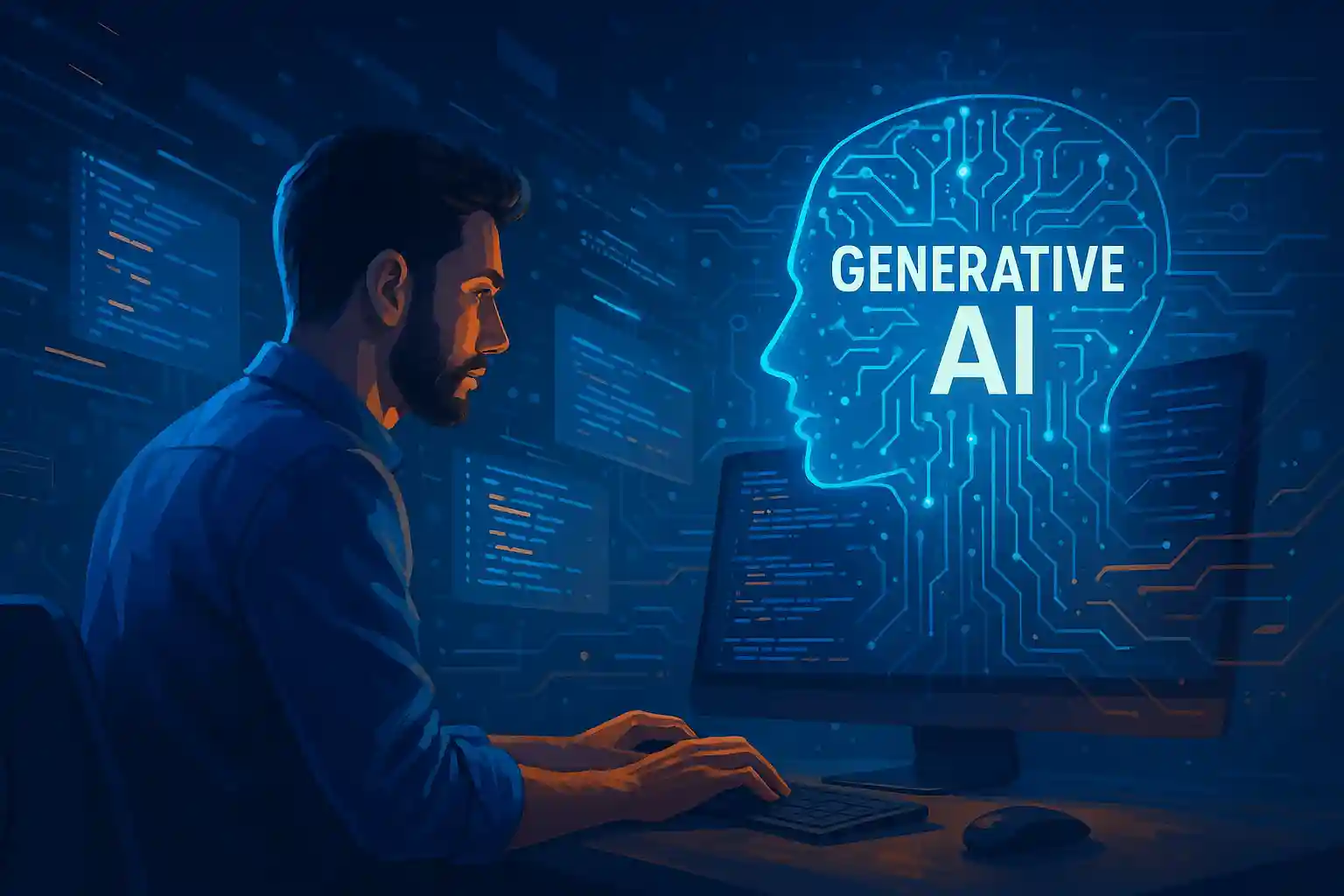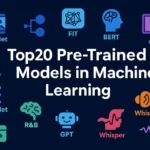Introduction to Machine Learning
Machine Learning (ML) is a subset of artificial intelligence (AI) that enables computers to learn from data without being explicitly programmed. It allows systems to improve their performance on a task over time as they process more data.
Why Machine Learning Matters in 2025
- Powers real-world applications (Google Search, ChatGPT, Netflix)
- Key driver in emerging technologies like autonomous vehicles and smart assistants
- Vital for data-driven business decisions
Machine Learning in Daily Life
- Spam filters in Gmail
- Recommendation systems in Netflix/YouTube
- Voice assistants like Alexa and Siri
- Google Maps traffic prediction
- Face recognition in smartphones
AI vs ML vs Deep Learning
| Term | What it Means | Example |
|---|---|---|
| Artificial Intelligence | Any machine that mimics human intelligence | Chatbots, game AI |
| Machine Learning | System learns from data | Product recommendation |
| Deep Learning | ML using neural networks | Self-driving cars |
How Machine Learning Works
ML models learn from data using a cycle of training and prediction:
The Process:
- Collect Data – e.g., housing prices, user behavior
- Preprocess Data – clean, normalize, and format
- Choose an Algorithm – decision tree, regression, etc.
- Train the Model – feed it data to learn patterns
- Evaluate – check accuracy using test data
- Predict – use model on new/unseen data
Example:
Predicting house prices based on size, location, and age using regression models.
Types of Machine Learning
Supervised Learning
- Learns from labeled data (input + correct output)
- Use cases:
- Email spam detection
- Credit scoring
- Image classification
- Popular algorithms: Linear Regression, Decision Trees, SVM
Unsupervised Learning
- Works with unlabeled data
- Finds patterns, clusters, or groups
- Use cases:
- Customer segmentation
- Anomaly detection
- Popular algorithms: K-means, PCA, DBSCAN
Reinforcement Learning
- Learns through trial and error
- Agent interacts with environment and learns from feedback (rewards)
- Use cases:
- Game AI (AlphaGo)
- Robotics
- Stock trading bots
- Algorithms: Q-learning, DQN (Deep Q Networks)
Popular Machine Learning Algorithms
| Algorithm | Type | Use Case |
| Linear Regression | Supervised | Predicting continuous values |
| Logistic Regression | Supervised | Binary classification |
| Decision Trees | Supervised | Rule-based predictions |
| K-Nearest Neighbors (KNN) | Supervised | Pattern recognition |
| Naive Bayes | Supervised | Text classification |
| Support Vector Machine (SVM) | Supervised | Classification tasks |
| Random Forest | Supervised | Ensemble prediction |
| K-means | Unsupervised | Clustering |
| Principal Component Analysis (PCA) | Unsupervised | Dimensionality reduction |
| Q-Learning | Reinforcement | Learning optimal decisions |
Applications of Machine Learning
In Business
- Customer churn prediction
- Sales forecasting
- Personalized marketing
In Healthcare
- Disease diagnosis (e.g., cancer detection)
- Drug discovery
- Predictive patient analytics
In Finance
- Fraud detection
- Credit risk modeling
- Algorithmic trading
In Everyday Technology
- Image recognition (Google Photos)
- Voice-to-text (dictation apps)
- Personalized search results
Challenges in Machine Learning
- Data Quality – Incomplete or biased data leads to poor models
- Overfitting – Model learns training data too well and fails on real-world data
- Underfitting – Model too simple to capture data complexity
- Bias and Fairness – ML can reinforce societal bias if not checked
- Explainability – Complex models (like neural networks) are hard to interpret
How to Get Started with Machine Learning (for Beginners)
Prerequisites:
- Basic Math (Linear Algebra, Probability, Statistics)
- Python Programming
- Logical problem-solving skills
Top Free Learning Resources:
Beginner-Friendly Tools:
- Scikit-learn – Simple library for classic ML
- Jupyter Notebook – Interactive coding interface
- Pandas & Numpy – Data manipulation
- Google Colab – Free GPU-powered notebooks
First Project Idea:
- Predict student test scores based on study hours using Linear Regression
Machine Learning vs Artificial Intelligence
| Feature | Artificial Intelligence | Machine Learning |
| Goal | Simulate human intelligence | Learn from data |
| Scope | Broad (logic, planning, ML) | Subset of AI |
| Dependency | May not need data | Requires data |
| Examples | Siri, AlphaGo | Recommendation engines |
Machine Learning Career Paths
Common Roles:
- Data Scientist – Focuses on analysis, modeling, and business insights
- Machine Learning Engineer – Builds production-ready ML systems
- AI Researcher – Works on cutting-edge ML theory and models
Skills Needed:
- Programming (Python, R)
- Data handling (SQL, Pandas)
- ML libraries (TensorFlow, PyTorch)
- Communication + business acumen
Salaries (2025 Estimates):
- Entry-level ML Engineer: $85k–$120k (approx. ₹7000000 – ₹10000000 per year)
- Data Scientist: $100k–$150k (approx. ₹8200000 – ₹12300000 per year)
- Senior AI Researcher: $180k+ (approx. ₹14700000+ per year)
Future of Machine Learning
Trends to Watch:
- AutoML – Automating the ML workflow
- Federated Learning – Privacy-preserving model training
- TinyML – ML on microdevices (IoT)
- Explainable AI (XAI) – Making ML decisions transparent
Will ML Replace Jobs?
- Some routine jobs may be automated
- New careers will emerge in ML development, ethics, deployment
- Human-in-the-loop systems will remain important
Frequently Asked Questions (FAQ)
1. What is Machine Learning in simple words?
Machine learning is a way for computers to learn patterns from data and make predictions or decisions without being explicitly programmed.
2. Is Machine Learning the same as Artificial Intelligence?
Not exactly. ML is a subset of AI. All ML is AI, but not all AI is ML.
3. Do I need coding skills to learn Machine Learning?
Yes, basic Python programming is essential for ML.
4. What language is best for Machine Learning?
Python is the most widely used language due to its ecosystem and simplicity.
5. Is Machine Learning hard to learn?
It depends on your background. With consistent learning, beginners can start building simple models in weeks.
6. What are the top ML libraries?
Scikit-learn, TensorFlow, Keras, PyTorch
7. Can I learn ML without a degree?
Yes. Many professionals learn via online platforms, bootcamps, and projects.
8. How much math do I need?
You need foundational knowledge of statistics, linear algebra, and probability.
9. What kind of jobs use ML?
Data Scientists, ML Engineers, AI Researchers, Product Analysts
10. How is ML used in real life?
In self-driving cars, fraud detection, healthcare diagnostics, recommendation systems, etc.
Read Also:
Ultimate Guide to Start a Data Science Career in 2025
Best Programming Languages to Learn in 2025
AI-as-a-Service (AIaaS): Powerful AI for Businesses 2025
All About Data Science – Complete 2025 Roadmap to a High-Paying Career

